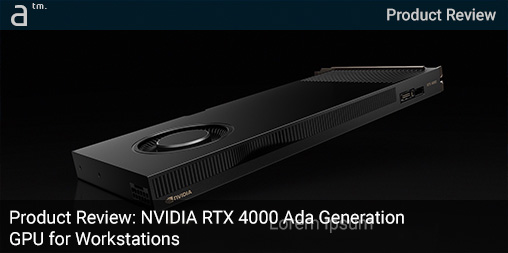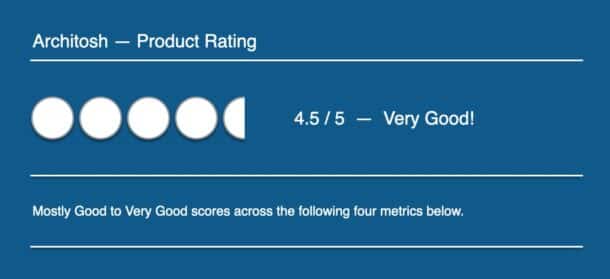Continued from page 2
Economic Metrics
As earlier noted in our GPU Economics section on page one, we like to compare GPUs on a performance-per-dollar basis and we look at the cost in USD per Compute Unit (CU) of a particular benchmark score. The formula is:
Cost in USD per Compute Unit (CU) = cost of GPU / benchmark score
Let’s now review the three benchmarks where we run these types of numbers.
Creo and Solidworks Composite Tests
In this test, we selected particular viewsets for the PTC Creo and SolidWorks parts of the SPECviewperf 2020 V3 benchmark and compared them on an economic basis. The Composite tests look broadly across both Creo and Solidworks at mixed types of OpenGL renderer setting levels, from simple shaded with edges to more complex OpenGL rendering settings including transparency, reflections, bumps, textures and anti-aliasing (AA).

Chart 14: SPECviewperf – Composite Performance (CU) per Dollar. Shorter bars are better in these blue charts. In this economics-value-oriented chart, the cost of one compute unit (CU) score in our selected Creo + Solidworks viewsets is shown above in USD. The Nvidia RTX 4000 Ada delivers solid value compared to our previously reviewed GPUs and reference scores. In-housing testing on all GPUs shown above. (Image: Architosh)
This Composite across Creo and SolidWorks gives a wide gamut of OpenGL performance across MCAD and other OpenGL-based applications. We can see on a Cost per CU basis, the Nvidia RTX 4000 Ada GPU ranks better than a previous-generation competitor in the AMD Radeon Pro W6600 GPU, but not quite matching W6600’s little sibling.
Creo & SolidWorks Shaded & Edge Performance Tests
On the Shaded & Edge Performance subtests, we are looking at addressing the fact that a large share of users still work in viewports rendered with “shaded with edge mode” with or without AA (anti-aliasing) turned on. While this basic OpenGL rendering type is still quite common, it is waning in the face of more sophisticated real-time rendering capabilities powered by modern GPUs.

Chart 15: SPECviewperf – Shaded & Edge Performance per Dollar. Shorter bars are better in these blue charts. In-housing testing on all GPUs shown above. (Image: Architosh)
As such, given the progress and transition to more modern graphics APIs like Vulkan and DirectX, this particular rendering mode is losing value in the grand scheme of things. If working in tools in this more basic rendering mode is all you need, then lower-tier GPUs are all you really need. That being said, the RTX 4000 Ada GPU delivered astonishingly high scores in this benchmark subset. (see Chart 8 and 9).
Cinebench GPU (Redshift) Tests
In this set of tests we had Cinebench GPU benchmark scores for the previous generation Nvidia workstation GPU—the Ampere generation RTX A4000. We also had our in-house testing of the Ampere generation RTX A2000.

Chart 16: Cinebench GPU Performance per Dollar. Shorter bars are better in these blue charts. In-housing testing on all GPUs shown above. (Image: Architosh)
We can see that compared to the previous Ampere generation GPU, the RTX 4000 Ada GPU delivers an 20 percent value improvement. This is an important point to see because compared to the previous generation the latest GPU is more expensive.
Performance Conclusions
OpenGL Workflows
We can see a massive speed 2.3x speed difference on our SPECviewperf Creo Shaded w/ Edges subtests with the RTX 4000 Ada GPU. Watching this test in action was quite the thrill as the models were whipped around in blinding speeds. For those doing basic OpenGL workflows in MCAD tools or AEC tools with less complex rendering modes, the RTX 4000 Ada GPU will supercharge your workloads. The only question is, would the smaller sibling RTX 2000 Ada GPU produce a similar matching score under these tests? We honestly would love to know that so maybe we push for reviewing the RTX 2000 Ada GPU next.
The Value Proposition
Whether in AEC or product design, the real value obtained in this GPU is in better rendering workflows, including ray tracing and real-time ray tracing. These may come about via new APIs like DirectX Ray Tracing (DXR) or the ray tracing components of the Vulkan API. As noted in our Blendermark section above, the Ada generation GPU is about 145 percent faster than the previous Ampere generation predecessor GPU at rendering workloads such as Blendermark GPU or Cinebench (Redshift GPU). We also noted the impressive Subsurface Scattering test results, another aspect of rendering. And the Vray mark tests show remarkable improvements over the Ampere generation predecessor.
In terms of OpenGL workflows in AEC and MCAD applications, the value proposition changes depending on how complex your viewport rendering settings are. We can see that in our subtests like the Shaded with Edges tests with and without AA. While many MCAD products leverage OpenGL 4 and above, our Creo and Solidworks subtests inside SPECviewperf v3 leverage and require OpenGL 4.5. This version of OpenGL featured GPU-based hardware tessellation for dynamic level-of-detail mesh refinement. The 4000 Ada GPU was incredibly quick in all the SPECviewperf tests, posting 328 FPS in our Solidworks Composite tests.
In general, for MCAD or AEC workflows without a lot of rendering workloads thrown in, the RTX 4000 Ada GPU will deliver incredible performance but on a pure economic basis one might get very similar results from the Ada generation RTX 2000 GPU or a discounted RTX A4000, which is still available on the market. However, if you have a decent amount of rendering workloads (say 20 percent or above) the value proposition changes instantly.
Recommendations
For visualization professionals in AEC or product design, the Nvidia RTX 4000 Ada GPU is a fantastic value. Even through the GPU is priced USD 200 more than its predecessor A4000 Ampere GPU, it delivers approximately 20 percent greater computer performance per dollar. That value savings compounds with the value of a professional’s time, which this publication has explained in quite some detail in an article titled, “BIM Manager: The Economic Value of Workstation Performance.”
While we won’t rehash that article’s economic conclusions, or those of a preceding article titled, “BIM Manager: The Economic Value of Rapid Response Time,” we know already that the savings or recaptured value of configuring workstations correctly can be as high as USD 6,480 dollars or more, annually. Thus, the cost of GPUs when added to workstation costs pale in comparison to opportunity costs of optimizing your CPU and GPU configurations for your workflows.
Other things we like about this GPU is the DLSS (Deep Learning Super Sampling) support for Enscape and much better video encode/decode capabilities. And then, of course, there is the 20 GB of memory on this GPU. As applications and models increase in size, so to the need for more memory. While there are a few more Ada generation pro GPUs to select from, unless you do visualization all day long, the RTX 4000 is likely the high point for the average AEC and product design user doing a fair amount visualization. And again, if you don’t do much visualization in your daily work, then the Ada generation RTX 2000 is likely a great choice, though we don’t know if a better value would be obtaining the older Ampere generation A4000 versus the RTX 2000 Ada. That is a question for another review.
In the meantime, we see AEC applications evolving away from OpenGL to low-level graphics APIs like DirectX, Vulkan and Metal. As real-time raytracing continues to penetrate more and more professional applications, benchmarks like Blender, Vray and Redshift continue to be highly meaningful, while SPECviewperf remains mostly OpenGL based and more meaningful to MCAD tools than AEC tools.
To learn more about the Nvidia RTX 4000 visit here.
Pros: Industry-leading performance per watt and the most powerful single-slot professional GPU in the market for CAD industry users. The GPU offers stunning performance gains over the Ampere predecessor GPU (RTX A4000) in raytracing rendering, benefitting from third-generation RT cores (48 cores). (Charts 3-4 and 10-11) V-ray, Blender, Redshift GPU rendering performance is excellent compared to the predecessor GPU boasting a 20% economic value boost in Redshift, as an example. (see Chart 16). New DLSS support in Enscape and AI technologies another great benefit; new encode/decode engines; incredibly high FPS scores in OpenGL MCAD workflows with a mixture of rendering modes; plus 20 GB GDDR6 ECC memory.
Cons: Perhaps given AMD’s exit from the professional GPU market, the entire Ada Lovelace generation GPUs are a bit more expensive. On a performance per dollar basis, the Ada generation has been criticized for being less impressive than the prior generation jump, and the RTX 4000 model, in particular, is the least impressive. In our Cinebench Cost per CU chart, we note only a 20% improvement over the previous generation GPU. This is really the only negative we can reasonably come up with.
Advice: For CAD industry professionals with visualization workloads, the RTX 4000 Ada GPU is an excellent solution for your workstation build or upgrade. For dedicated visualization professionals, the Ada generation GPUs above this solution will possibly provide even better value for your dollar.
Cost: 1,200 USD MSRP
Volume of New Content = 4.5 — The RTX 4000 Ada GPU delivers similar technologies to its predecessor in similar amounts, but in updated underlying technologies. However, notable new additions include new DLSS (Deep Learning Super Sampling) AI technologies which are active in tools like Enscape, plus an excellent new underlying chip (AD104) built on a very efficient custom node from TSMC. There is also a notable increase in onboard memory (20 GB, up from 16)
Quality of Execution = 4 — The new GPU delivers industry-leading performance for a single-slot GPU based largely off its new chip. Ironically, the memory bandwidth is 360GB/s based on a 160 bit wide memory interface which is less than the predecessor GPU with its 448 GB/s bandwidth based on a 256-bit wide memory interface. This felt like a step backward.
Underlying Technologies = 5 — The new AD104 chip is built on a custom TSMC 4nm “4N” node which differs from the TSMC N4 node used for other chipmakers. This new Ada generation chip packs twice as many transistors than the previous Ampere generation chip into an efficient design, with a great balance of performance versus power efficiency. It also features improved RT cores for raytracing and 4th gen Tensor cores for AI features like DLSS 3 noted above.
Future Proofing = 5 — The GPU is on the leading-edge of graphics technologies, including new AI features (DLSS 3) driven by its Tensor cores. It also offers the leading-edge memory (GDDR6), PCIe Gen 4 and the AV1 encode and decode support. These capabilities mean the Ada GPU will be capable of delivering advanced performance for years to come.




